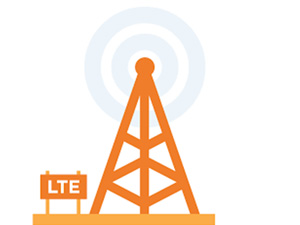



Date:29/03/19
 Security researchers at the Korea Institute of Science & Technology have identified 36 security flaws in the 4G LTE standard used by mobile networks and devices worldwide.
Security researchers at the Korea Institute of Science & Technology have identified 36 security flaws in the 4G LTE standard used by mobile networks and devices worldwide.
In their research paper [PDF], they claim to have found vulnerabilities enabling attackers to eavesdrop and access user data traffic, distribute spoofed text messages, interrupt communications between base station and phones, block calls and disconnect users from the network.
Although there has been plenty of research about LTE security vulnerabilities published in the past, but what's different about this particular study is the scale of the flaws identified and the way in which the researchers found them.
Using a technique called "fuzzing", the researchers claim that they came across 51 vulnerabilities in total. While 15 had been previously detailed, 36 of them are new.
"Based on the security property, LTEFuzz generates and sends the test cases to a target network, and classifies the problematic behaviour by only monitoring the device-side logs," wrote the researchers.
"Accordingly, we uncovered 36 vulnerabilities, which have not been disclosed previously. These findings are categorised into five types: Improper handling of (1) unprotected initial procedure, (2) crafted plain requests, (3) messages with invalid integrity protection, (4) replayed messages, and (5) security procedure bypass."
The researchers also investigated how these flaws can differ based on context and environment.
For example, a single carrier could have different vulnerabilities on two different devices, or a single device that uses two different networks could experience varying flaws.
"This shows that neither the device vendors nor the carriers have checked the security of their network components carefully. In addition, LTEFuzz was able to uncover vulnerabilities in baseband chipsets from Qualcomm and HiSilicon," they added.
Since publishing the research, the researchers have alerted the 3GPP, the GSMA and vendors of the newly found vulnerabilities.
They concluded by saying: "We plan to privately release LTEFuzz to these carriers and vendors in the near future. A public release is not planned as LTEFuzz can be used for malicious purposes."
This news comes at a time when network operators and vendors are preparing for the emergence of 5G, which will succeed 4G and cater to the expanding IoT ecosystem.
Researchers find 36 security flaws in LTE
 Security researchers at the Korea Institute of Science & Technology have identified 36 security flaws in the 4G LTE standard used by mobile networks and devices worldwide.
Security researchers at the Korea Institute of Science & Technology have identified 36 security flaws in the 4G LTE standard used by mobile networks and devices worldwide.In their research paper [PDF], they claim to have found vulnerabilities enabling attackers to eavesdrop and access user data traffic, distribute spoofed text messages, interrupt communications between base station and phones, block calls and disconnect users from the network.
Although there has been plenty of research about LTE security vulnerabilities published in the past, but what's different about this particular study is the scale of the flaws identified and the way in which the researchers found them.
Using a technique called "fuzzing", the researchers claim that they came across 51 vulnerabilities in total. While 15 had been previously detailed, 36 of them are new.
"Based on the security property, LTEFuzz generates and sends the test cases to a target network, and classifies the problematic behaviour by only monitoring the device-side logs," wrote the researchers.
"Accordingly, we uncovered 36 vulnerabilities, which have not been disclosed previously. These findings are categorised into five types: Improper handling of (1) unprotected initial procedure, (2) crafted plain requests, (3) messages with invalid integrity protection, (4) replayed messages, and (5) security procedure bypass."
The researchers also investigated how these flaws can differ based on context and environment.
For example, a single carrier could have different vulnerabilities on two different devices, or a single device that uses two different networks could experience varying flaws.
"This shows that neither the device vendors nor the carriers have checked the security of their network components carefully. In addition, LTEFuzz was able to uncover vulnerabilities in baseband chipsets from Qualcomm and HiSilicon," they added.
Since publishing the research, the researchers have alerted the 3GPP, the GSMA and vendors of the newly found vulnerabilities.
They concluded by saying: "We plan to privately release LTEFuzz to these carriers and vendors in the near future. A public release is not planned as LTEFuzz can be used for malicious purposes."
This news comes at a time when network operators and vendors are preparing for the emergence of 5G, which will succeed 4G and cater to the expanding IoT ecosystem.
Views: 439
©ictnews.az. All rights reserved.Similar news
- Cellphone Use May Raise Cancer Risk
- Australian police pushes cyber safety education
- Vietnam aims to lead in e-government
- Senate Website Gets Hacked
- US builds net for cyber war games
- Japan enacts anti-computer virus law
- India passes law vs e-waste
- Anonymous Declares War On The City Of Orlando
- Microsoft highlights evolving dangers as online identity data proliferates
- Consumers want internet security to be provided by banks
- Government facilities targets of cyber attack
- South Korean web attacks might been war drill
- Sri Lanka to Establish National Passport Database to Increase Border Security
- Hi-tech crime agencies set to employ information security professionals
- Phone hacking and online campaign bring down the News of the World





















